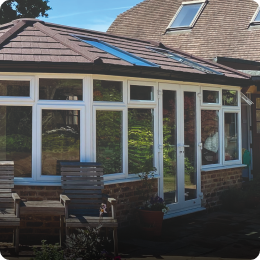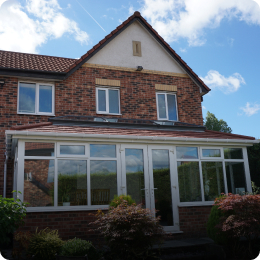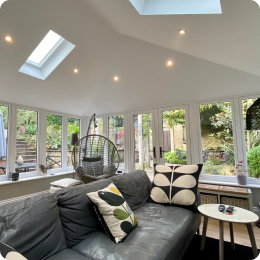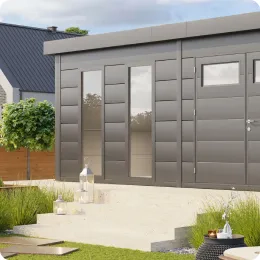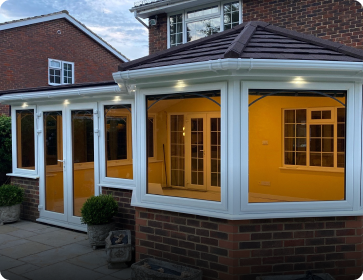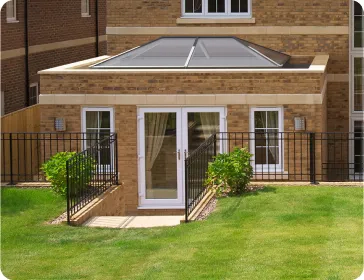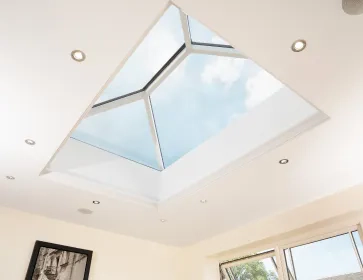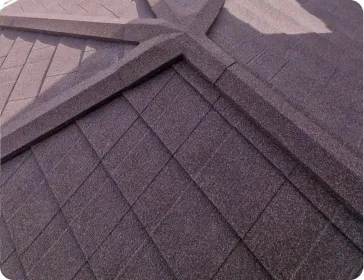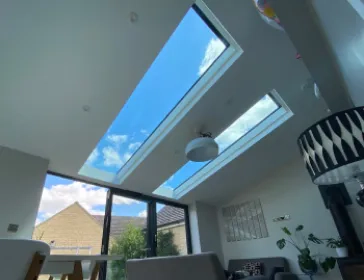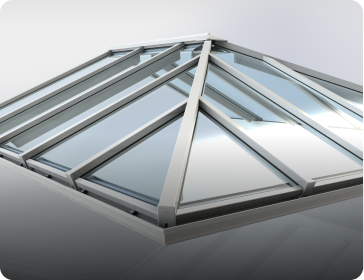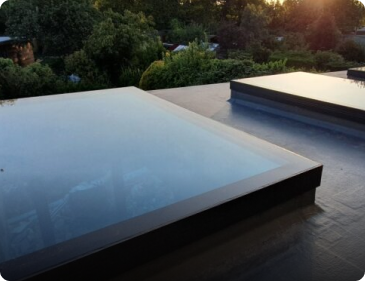
In recent years, conservatory cladding has gained popularity as a quick and affordable way to upgrade an old or tired conservatory. Homeowners are often attracted to the promise of better insulation, improved aesthetics, and a cost-effective solution to modernising their home.
However, while cladding may seem like an easy fix, it comes with serious risks that every homeowner should understand before proceeding.
Poor installation, unregulated materials, and a lack of awareness about the potential dangers of conservatory cladding can lead to long-term structural and financial problems. In this guide, we’ll explore the dangers of conservatory cladding, how it can affect your home, and provide safer, more effective alternatives.
What is Conservatory Cladding?
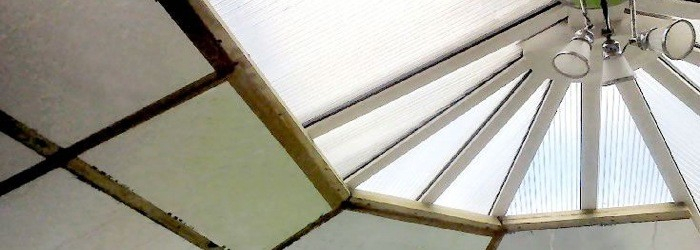
Conservatory cladding, also known as a cladover, is when an installer tries to pass off basic timber installation material, low-grade tiles and plasterboard for a real tiled roof, ultimately causing harm to both the conservatory and the homeowner. Rather than replacing the whole conservatory roof, the installer will take out the old polycarbonate sheets, directly fix timber battens to the pre-existing roof and plaster over to mask any potential issues.
Cladding is often marketed as a cheap way to upgrade an old conservatory, but in reality, it poses serious risks. Here’s a breakdown of the four types of cladding you may encounter:
1. Internal Cladover (Cladunder)
Also known as an under-clad, this method involves leaving the existing conservatory framework in place and pinning hollow cladding to the framework, creating a false ceiling. While it may improve the appearance, it does nothing for insulation, essentially just covering the roof. In fact, this method often leads to condensation issues and fails to provide any real thermal benefit.
2. External Cladover
Also known as an overclad, this is where lightweight tiles are placed over the existing conservatory roof. Although it may look like a professional roof replacement, this puts more weight on the roof structure. The underlying structure was designed to support lightweight materials like polycarbonate or glass, not the added weight of tiles. This can lead to dangerous structural stress and long-term damage.
3. External & Internal Cladover
This combination of both an underclad and overclad can be particularly dangerous. It involves covering both the interior and exterior of the existing roof structure, hiding potential issues while adding significant weight. Despite its high cost, this method does not comply with building regulations and can lead to major structural failures.
4. Solid Panel Cladover
This method involves replacing the glass or polycarbonate roof panels with solid panels. However, with U-values (which measure thermal efficiency) of 0.29, these panels are less thermally efficient compared to other tiled roofs. They also lack a quality internal finish.
Problems With Conservatory Cladding
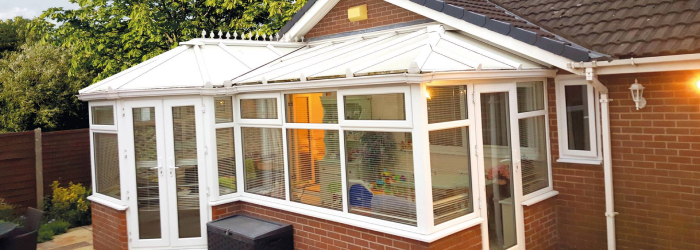
Now that you know what a cladover involves, let’s dive into why it’s a bad idea. We often get asked whether conservatory cladding is safe, and the short answer is no. Here are the main dangers associated with cladding and why it’s not worth the risk:
1. Structural Risks
Conservatories are generally built to support lightweight materials like glass or polycarbonate. Cladding adds significant weight to the structure, especially if both internal and external cladding are applied. Without proper reinforcement, this additional weight can lead to serious structural issues, including:
- Cracking plaster: The extra weight can cause internal finishes like plaster to crack, especially when moisture or temperature changes affect the cladding materials.
- Warping or bending of the framework: Adding cladding can put too much pressure on the existing structure, leading to warping or bending of the frame, especially if it’s made from PVCu or aluminium.
- Roof collapse: Under the weight of heavy snow or rainfall, an overloaded roof can collapse, as the existing framework wasn’t designed to support heavier materials like timber and tiles.
In some cases, poor installation can also lead to water damage. Improper sealing or gaps between the cladding and the original roof can allow moisture to seep through, causing damp, mould, and rot, further compromising the conservatory’s structural integrity.
2. Non-Compliance with Building Regulations
Many homeowners don’t realise that cladding often fails to meet UK building regulations, which are in place to ensure your conservatory is safe and energy-efficient.
In the UK, replacing a conservatory roof with a solid structure must meet building regulations that cover:
- Structural safety
- Insulation requirements
- Ventilation standards
Cladover systems frequently bypass these checks by simply adding weight to the existing framework, which wasn’t designed for this purpose. Without proper structural calculations or compliance certificates, you could face significant issues when trying to sell your home. Non-compliant work may lead to fines or even being forced to remove the cladding.
To understand the risks of these cladding jobs, we contacted Building Control at Leeds Council. We were told that replacing a conservatory roof with a solid one is indeed subject to Building Regulations. These regulations require proper structural calculations and approvals to ensure the roof is self-supported, rather than relying on the weaker PVCu window structure.
Find out more about Building Regulations for conservatories.
3. Fire Safety Hazards
Another major issue with conservatory cladding is that many materials used are not fire retardant, and some have been poorly tested for fire safety. This creates a serious fire risk, especially if cladding is used over flammable materials or where there’s little airflow for cooling.
Cladding that doesn’t meet fire safety standards can spread fire quickly through your conservatory. This becomes particularly dangerous if the cladding creates a sealed layer that blocks emergency exits or ventilation.
When upgrading your conservatory roof, it’s crucial to select materials that comply with UK fire regulations.
4. Poor Thermal Efficiency
One of the main reasons for upgrading your conservatory roof is to improve thermal insulation. However, cladover systems usually perform poorly in this area.
In the UK, the required U-value for roof insulation should be 0.15 in England, 0.13 in Wales, and 0.12 in Scotland. Cladover roofs rarely meet these standards, leaving your conservatory too hot in the summer and too cold in the winter.
Instead of creating an energy-efficient space, cladding often results in higher energy bills because your heating and cooling systems need to work overtime to regulate the temperature.
5. Condensation and Damp Issues
Another common problem with cladding is condensation build-up. When materials are layered without proper ventilation or thermal barriers, moisture can accumulate between the original roof and the new cladding. This trapped moisture can lead to:
- Mould and damp: Moisture trapped within the roof structure encourages mould growth and dampness, which can cause damage to both the conservatory and the interior of your home.
- Structural damage: Over time, excess condensation can weaken the structure, leading to rot or corrosion of materials like timber or metal, further exacerbating the problems.
Without proper insulation and ventilation, a cladded conservatory can quickly become a breeding ground for these issues, making the space uncomfortable to use throughout the year.
6. Impact on Property Value
Poorly installed or non-compliant cladding can negatively impact your property’s value. Here’s how:
- Non-compliant installations: If your conservatory cladding doesn’t meet building regulations, it could show up during a property inspection when you try to sell your home. This might deter potential buyers or force you to lower your asking price significantly.
- Aesthetic deterioration: Over time, cladding materials like wood or metal can warp, corrode, or fade, detracting from the visual appeal of your conservatory. This can harm your home’s overall curb appeal and make it less attractive to prospective buyers.
When we contacted Building Control at Leeds Council and asked about cladovers, the council’s response was clear: “We usually pick those up when they try to sell the house.”
Essentially, you may get away with a cladover in the short term, but the problems will likely surface when you try to sell your home, leaving you with expensive corrections to make before the sale can proceed.
7. Energy Efficiency and Insulation Concerns
Conservatory cladding is often advertised as a way to improve insulation, but it rarely lives up to these promises. Many cladding systems fail to provide the thermal efficiency needed to keep your conservatory comfortable throughout the year.
Without meeting the necessary U-values, cladding can leave your conservatory too hot in the summer and too cold in the winter, causing your energy bills to rise as your heating and cooling systems work overtime.
SupaLite Chairman, Dave Watters, knows how these botch jobs are affecting the industry, he comments:
“Conservatory cladding creates problems. Firstly, the new roof will add too much weight to the original PVCu or aluminium structure that carried the polycarbonate or glass roof.
It’ll offer no measurable insulation or structural calculations. And it will be susceptible to cracking plaster and leaking at the first sign of rain”
Here’s Dave explaining the problems of installing conservatory cladovers:
How Homeowners Get Tricked by Cladovers

Unfortunately, many homeowners are misled into choosing cladding because it’s often sold as a cheaper alternative to a full roof replacement. However, cheap doesn’t always mean good value. Here are some common tactics used to sell cladovers:
- Suspiciously low quotes: If the price sounds too good to be true, it probably is. Some installers offer cladding at a much lower price, but don’t tell you that it’s not a long-term solution.
- False promises of high-quality materials: Some companies might claim they’re using branded products or premium materials, but often these are cheap, low-grade alternatives.
- Lack of proper support: Cladding adds extra weight to the roof, but these installers often fail to reinforce the structure or meet building regulations. This could lead to major problems down the line.
At first glance, the roof might look decent, and you could be satisfied with your cheaper option. However, the original PVCu structure that supported the lightweight polycarbonate roof isn’t strong enough to carry the weight of solid roofing materials. As a result, under stress from a heavy snowfall or simple load-bearing issues, the roof may begin to sag, warp, or even collapse.
Once the problems start, you might search for your 10-year warranty or Building Control Certificate, only to find that your installer didn’t provide them. This leaves you with a subpar roof and no legal protection if things go wrong.
The Scale of Deception
The market for solid roofs is estimated to be around 700 branded roofs per week, but it’s also believed that 1,000 cladovers are sold weekly. This means a large portion of homeowners are being deceived, often not realising it until it’s too late.
We’ve heard of cases where homeowners phone reputable companies saying, “I’m having one of your roofs fitted, but there’s a lot more timber than I expected.” When photos are sent, it becomes clear they’ve been sold a cladover, not the genuine roof they thought they were getting.
This deception can often be hard to spot, especially if the homeowners are not present during installation. Without cutting open the plasterboard or tiles, it’s difficult to see what’s been hidden underneath.
Alternatives to Conservatory Cladding: The SupaLite Tiled Roof System
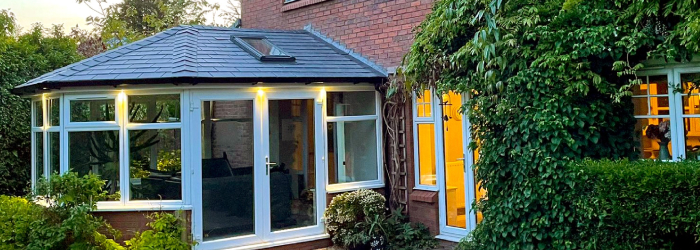
If you’re serious about upgrading your conservatory, it’s time to consider a proper roof replacement – and the SupaLite Tiled Roof System is the way to go. Here’s why:
- Superior Thermal Efficiency
SupaLite roofs meet and exceed U-value standards, ensuring excellent insulation and year-round comfort in England, Wales, and Scotland. - Lightweight and Strong
With an aluminium structure, SupaLite roofs are lightweight yet durable, designed to handle weight without stressing your conservatory’s frame. - Fully Compliant with Regulations
SupaLite roofs comply with UK building regulations, and you’ll receive a Building Control Certificate upon completion, ensuring your roof is safe and legal. - Customisable Options
Choose from a range of tile and slate colours, or add SkyVista glass panels for natural light, enhancing the look and feel of your conservatory. - 10-Year Guarantee
SupaLite offers a 10-year guarantee, giving you peace of mind that your investment is secure.
Explore our range of conservatory roofs to discover even more benefits!
How to Ensure a Safe, Compliant Conservatory Installation
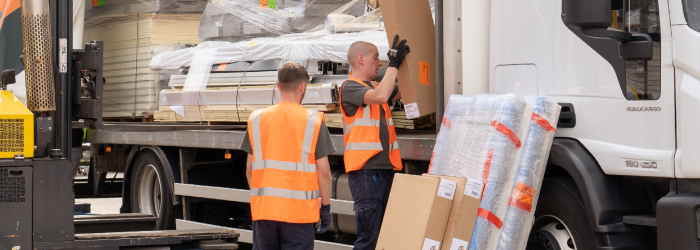
Before you commit to any conservatory roof upgrade, here are some key steps to take:
- Hire Approved Installers: Always choose certified, trusted professionals like those approved by SupaLite. Avoid contractors who offer suspiciously low prices or push cladding as a solution.
- Ask for Structural Calculations: Ensure your installer has calculated the weight load and wind/snow resistance of the new roof.
- Obtain a Building Control Certificate: This is proof that your roof complies with all relevant building regulations, and it’s crucial for future property sales.
Don’t Settle for a Cladover – Choose SupaLite for a Real Upgrade
When it comes to upgrading your conservatory, cladding is not the way to go. While it may seem like a cheaper option, the structural risks, poor insulation, and non-compliance with regulations make it a dangerous choice.
Instead, opt for a SupaLite tiled roof – a safe, reliable, and energy-efficient solution that will transform your conservatory into a stunning, year-round living space.
Ready to upgrade your conservatory the right way? Get a quote from SupaLite today and find an approved installer near you. Don’t settle for less – remember, you buy cheap, you buy twice!

